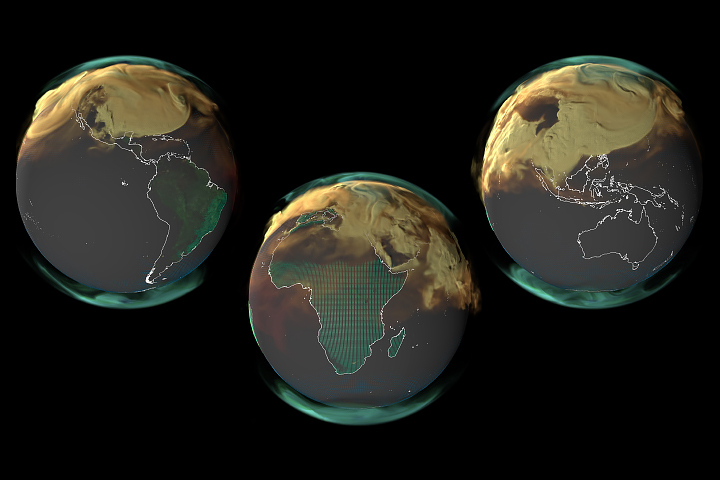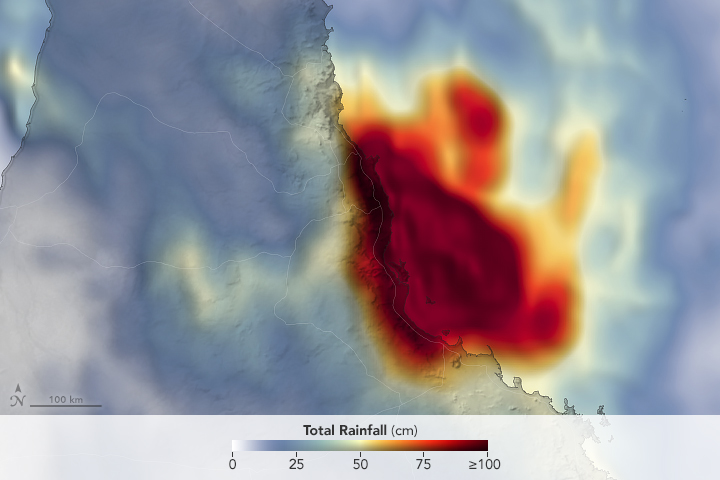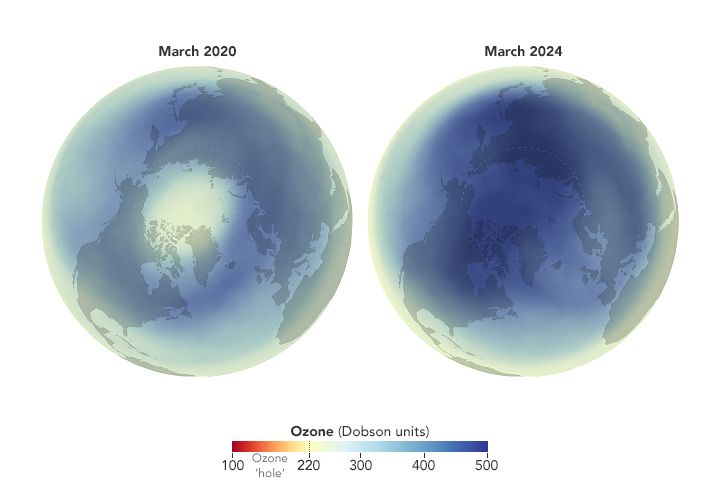



Recent Imagery
You will be directed to the NASA Visible Earth webpage when you select Images by Mission below, or click on the images at right that are randomly generated to represent four out of all possible topics.
You are here
SeaWinds on the Advanced Earth Observing Satellite II (ADEOS II) (SeaWinds)
Status:
Completed
Mission Category:
Other
Launch Date: December 14, 2002
Launch Location: Tanegashima Space Center, Japan
Actual Completion Date: October 24, 2003
The SeaWinds scatterometer flew onboard the ADEOS II spacecraft. ADEOS II was an international satellite mission led by the Japan Aerospace Exploration Agency (JAXA) - formerly the National Space Development Agency (NASDA) of Japan - with U.S. (NASA) and French Centre Nationale d’Etudes Spatiales (CNES) participation. Midori-II is the Japanese name for the mission.
The ADEOS II mission ended prematurely ten months after launch, owing to a failure of the solar panel on October 24, 2003.
Key SeaWinds on the Advanced Earth Observing Satellite II (ADEOS II) Facts
| Mission/Portal Page: | http://science.nasa.gov/missions/seawinds/ |
|---|---|
| Launch Vehicle: | H-IIA launch vehicle No. 4 |
| Altitude:Distance from sea level. | 803km |
| Inclination: | 98.6° |
| Origination: | Joint with Japan and France |
| Instruments: |
AMR (Advanced Microwave Radiometer) GLI (Global Imager) ILAS II (Improved Limb Atmospheric Spectrometer II) POLDER (Polarization and Directionality of the Earth’s Reflectance) SeaWinds (Microwave Radar Instrument) |
| Project Scientist(s): |
Ernesto Rodriguez |
Relevant Science Focus Areas:
- Climate Variability and Chang
- Weather
Relevant Science Questions:
- How is the global Earth changing?
Science Goals:
- Monitor the water and energy cycle as a part of the global climate system.
- Quantitatively estimate the biomass and fundamental productivity as a part of the carbon cycle, which plays an important role in global warming.
- Detect trends in long-term climate change as a result of continuing the observations started by ADEOS-I.
Related Applications:
- Air Quality
- Coastal Management
- Disaster Management

